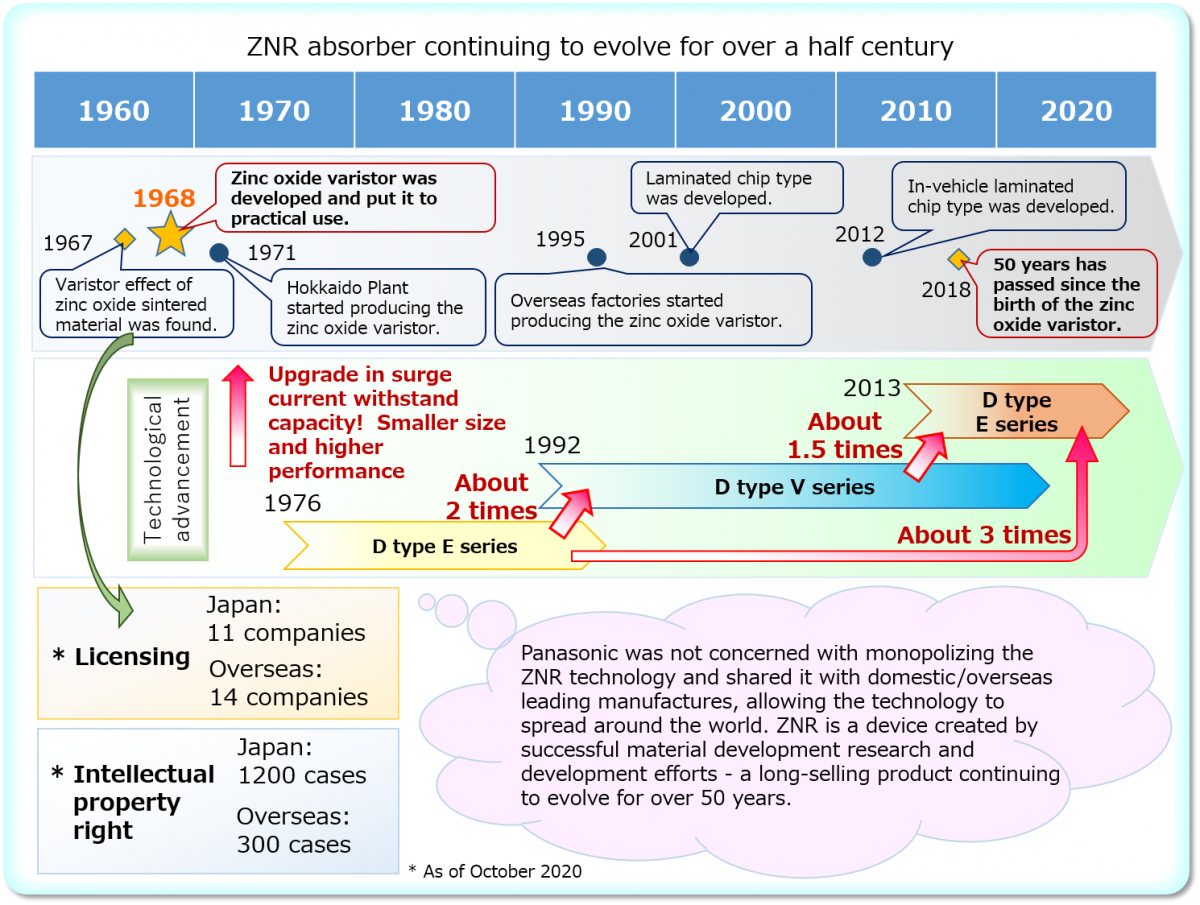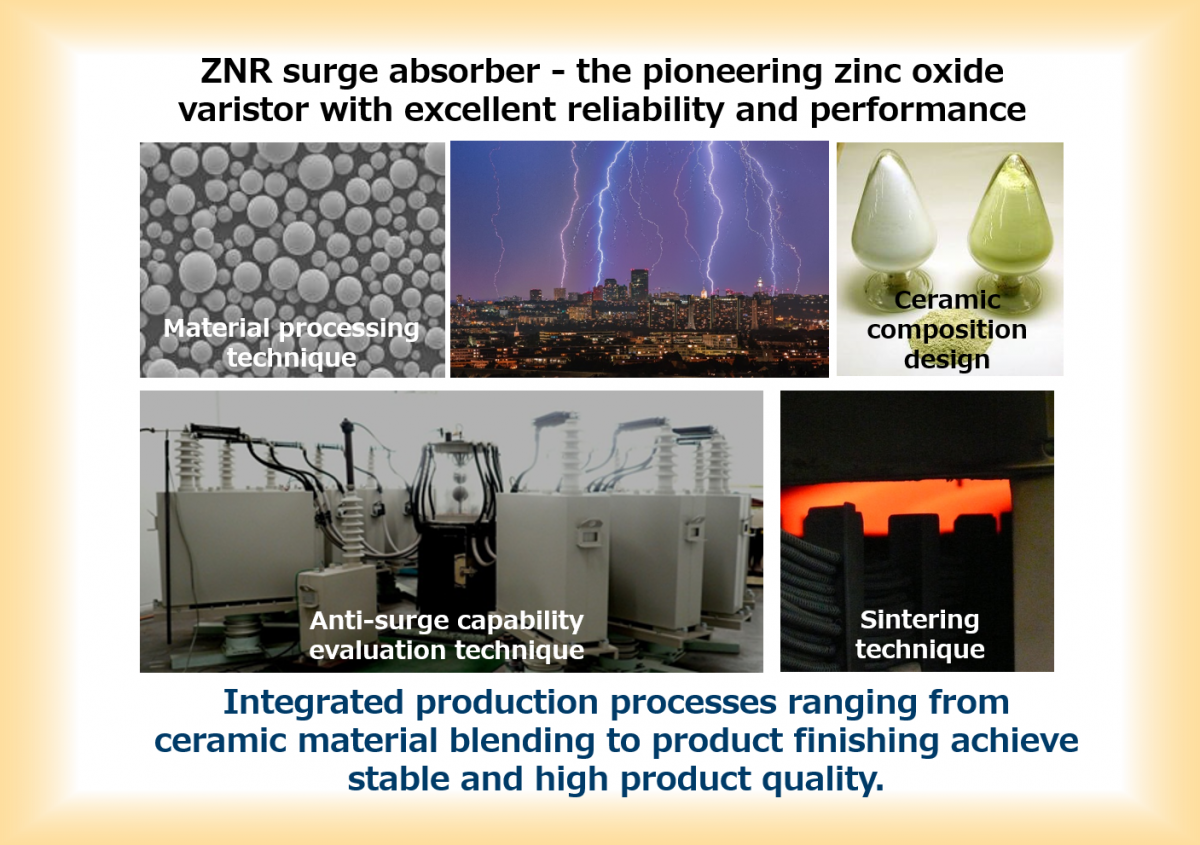In 1968, Panasonic (formerly Matsushita Electric Industrial) developed the ZNR (zinc oxide varistor) and put it to
practical use for the first time in history. This success started from one incident - thermal runaway of an electric
furnace that led to the discovery of new material behavior. Lots of experiments of trial and error followed this
discovery and an optimum solution was finally found. This process is similar in many respects to the process that
resulted in the invention of penicillin. Hence, Panasonic's success in developing the ZNR used to be called "planned
serendipity."
Panasonic was not concerned with monopolizing this new technological breakthrough and shared it with
outstanding domestic and overseas manufacturers to spread the ZNR to markets around the world. Since then, the ZNR, a
typical example of a device created by successful material development research and development efforts, has been
reformed and improved for over 50 years and still offers a new horizon of technological advancement. Now, people see it
as a good example of developing a long-selling product.
Currently, the ZNR is referred to as zinc oxide (ZnO) varistor
or metal oxide varistor (MOV) and is used as an important component indispensable to measures for protecting equipment
from surges.

As a manufacturer focusing on the development of varistors, we have established our unique element techniques, such as ceramic composition design skills and sintering techniques, and run integrated production processes ranging from ceramic material blending to product finishing.
We have been making efforts to improve our technologies involved in material selection and general processes, and have succeeded in improving the performance and reliability of products.
This allows us to provide a wide range of product lineups that are usable in various service environments where products are exposed to low voltage, high voltage, or even extremely high voltage and that can be applied to public welfare, industrial, power, and automotive fields.
